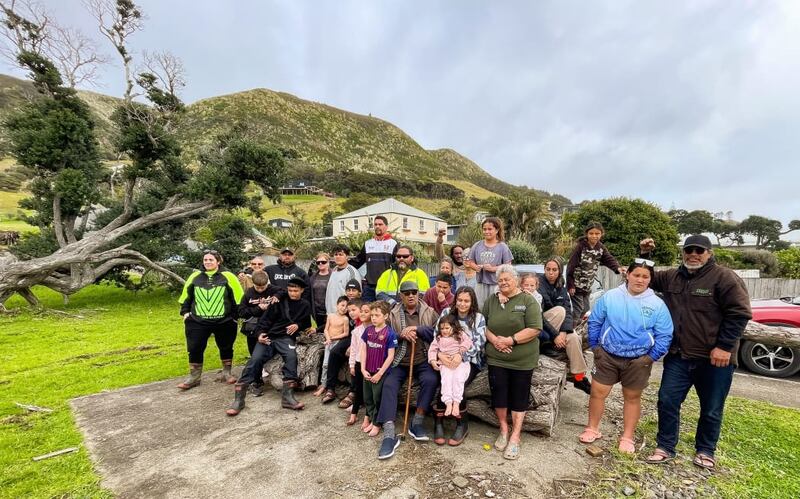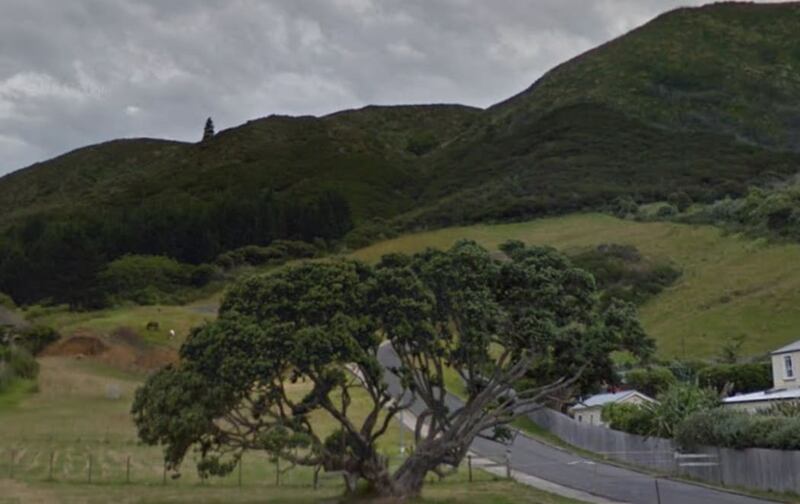A long-running occupation of a waterfront property in Ahipara has ended after the Far North District Council agreed to buy the land and turn it into a public reserve.
Ahipara hapū have been occupying a section at the corner of Foreshore Rd and Wharo Way since October 2021.
The occupation began after the landowner felled part of a historically significant pōhutukawa tree to make space for a house.
The landowner said he had checked with the council and was told the tree was not protected.
Occupation leader Reuben Taipari said the land, known as Moringai, was once the location of a marae and was historically significant for local hapū.
Taipari said the council’s decision was a win for hapū, the community and the landowner.
Stalemate resolved
“It’s a good result … it’s been 20 years of protest and two years of full occupation. It’s sad we have to go through these scenarios to resolve things properly.”
Taipari wanted the Ahipara community to decide how the land would be used once it was in public hands.
Following the stoush over the tree, the landowner, Kaitāia GP Cecil Williams, abandoned plans to build a retirement home on the section and put the land up for sale.
That led to a stalemate with Williams unable to find a buyer while the land was occupied, and the occupiers unwilling to leave until the property was protected from development.
That appears to have been resolved with the council voting last week to buy the land.

The discussion was held behind closed doors so it is not known how much councillors have set aside for the purchase.
Dr Williams originally wanted $500,000 for the land, which he said was the amount he had paid for the section plus his subsequent expenses.
At last week’s meeting councillors also agreed to add the pōhutukawa to the district’s Schedule of Notable Trees, put a covenant on the property to protect the tree in perpetuity, set up a co-management plan for the reserve, and lay a plaque commemorating Moringai’s historical significance.
Taipari, of Ngā Hapū o Ahipara, said his only remaining concern was councillors’ decision to designate the land as a local purpose reserve, rather than a historic reserve.
He said the purchase was “an investment in the community” and would benefit everyone in the Far North.
Williams has been contacted for comment.
He has previously told RNZ he had been assured three times by council staff the tree was not protected before he had half of it cut down.
No listed on council schedule
What had followed was two years of stress, threats and uncertainty.
He had yet to be contacted by the council about the decision to buy the land.
Checks by RNZ show the tree is not currently included in the council’s Schedule of Notable Trees, but it is listed as a “landmark pōhutukawa tree” in the Ahipara Takiwa Management Plan prepared by local iwi Te Rarawa.
Controversy around the Wharo Way development is nothing new, with the land first occupied when it was subdivided about 20 years ago.
Former Te Rarawa chairman Haami Piripi previously said that occupation was resolved when the council and the developer agreed to make the corner section, including the pōhutukawa, a public reserve.
Piripi said he was shocked when he discovered two years ago that had never happened.

Last week’s vote to buy the section was not unanimous, with some councillors arguing the money should be spent on roads and fixing potholes instead.
However, Taipari said Foreshore Rd, along Ahipara’s waterfront, was built on land gifted by Māori. That had allowed development of the waterfront and the construction of many homes, creating significant income for the council in the form of rates.
During the meeting, Far North Kahika (Mayor) Moko Tepania acknowledged undertakings to protect the Wharo Way property had been broken by historic actions.
The council was not a default Office of Treaty Settlements but there were special circumstances in this case that supported the motion to negotiate purchasing the land.

